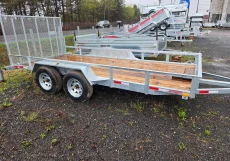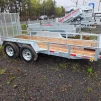Stainless steel heat exchanger tubes
0 Views

-
Is stainless steel good for heat exchangers?
Stainless steel is often used for heat exchangers because it is resistant to corrosion and can handle high temperatures. It’s helpful in various industrial contexts because it requires little care and is simple to clean. Stainless steel can also endure the heat and stress of several heat exchanger applications because it is a relatively robust material.
Stainless steel’s longevity and durability are further reasons why it’s a good material for heat exchangers. Stainless steel can endure high and low temperatures, making it useful in the food, chemical, and pharmaceutical industries.
Stainless steel’s resistance to corrosion, high temperature, and pressure make it an excellent choice for heat exchangers. However, when choosing your materials, think about the kind of stainless steel & heat exchanger design that will work best for your needs.
-
What different kinds of tubes are used in SS heat exchangers?
Heat exchangers play a crucial role in a wide variety of manufacturing procedures. Heat exchangers are devices used to move heat from one medium to another; stainless steel (SS) heat exchangers are particularly common because of their longevity and resistance to corrosion.
Different kinds of tubes can be employed in stainless steel heat exchangers. Each has unique qualities that make it better for specific tasks. The most popular types of tubes used in heat exchangers made of stainless steel are:
Spirally welded tubes: A piece of stainless steel is helically welded into a tubular form to create these tubes. They are typically utilized in high-pressure applications due to their exceptional strength.
U-shaped tubes: U-shaped tubes like this are frequently found in heat exchangers that use the shell and tube design. They are noted for their exceptional strength and durability.
Extruded tubes: To make these tubes, a stainless steel rod is pushed through a die to obtain the desired tube shape.
-
What are the 3 types of stainless steel heat exchanger tubes?
There are several kinds of stainless steel heat exchanger tubes, but the three most common ones are:
Seamless tubes: These are exceptionally strong and long-lasting because they lack a weld seam during production. They are frequently employed in high-pressure & high-temperature applications.
Welded tubes: A piece of stainless steel is welded into a tube shape to make these tubes. They cost less than seamless tubes but aren’t as durable and might not be able to withstand as much pressure.
Finned tubes: Fins are connected to the exterior of these tubes to increase their surface area and make it easier for heat to move through them. Their most general application is in heat exchangers that use air cooling.
-
How many types of stainless steel boiler tubes are there?
There are a few common types of stainless steel that are used to make boiler tubes, such as:
Most boiler tubes are austenitic stainless steel, like 304 or 316. They’re highly durable, easy to shape, and resistant to corrosion. In addition to being non-magnetic, their thermal expansion coefficient is also low, making them ideal for high-temperature use.
Ferritic stainless steels, like 409 and 430, are less expensive than austenitic stainless steels but have the same corrosion resistance. Besides being magnetic, they also have a more significant thermal expansion coefficient. They find widespread use in lower temperature settings and cost-effective ones.
Duplex stainless steels, including 2205 and 2507, combine austenitic & ferritic microstructures. As a result of combining these two elements, strength and resistance to corrosion are greatly enhanced. Typically employed in high-temperature & high-pressure applications, they come at a higher price.
Martensitic stainless steels like 410 and 446 are as solid and hard as ferritic stainless steels while maintaining the same corrosion resistance. Their great strength and resistance to corrosion, even at high temperatures, make them a popular choice.
-
How can you start importing SS boiler tubes into Oman?
Procedures for importing stainless steel boiler tubes into Oman are as follows:
- Get a business license and registration from the Ministry of Commerce and Industry.
- Locate a provider of high-quality stainless steel boiler tubes. You can do this by researching online, going to trade shows, or getting in touch with trade associations.
- Talk to the supplier about the purchase terms, including the price, when the boiler tubes will be delivered, and any special requirements or certifications they need.
- Get a certificate of origin and other essential documents from the supplier, such as a commercial invoice, bill of lading, and packing list.
- Get in touch with a shipping company or freight forwarder to organize the transport of the boiler tubes to Oman.
- Get the shipment through customs by providing the required paperwork and paying any applicable import fees or taxes.







